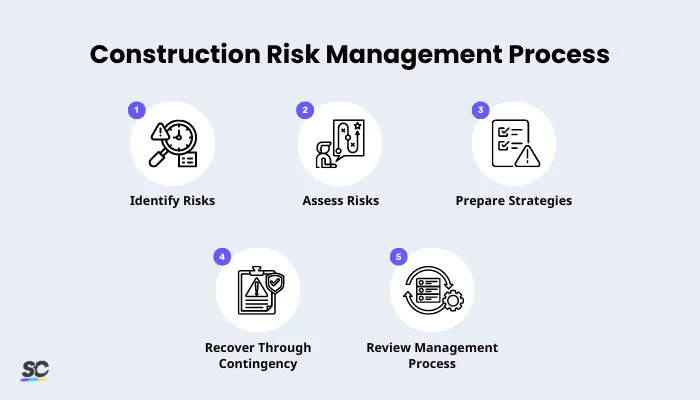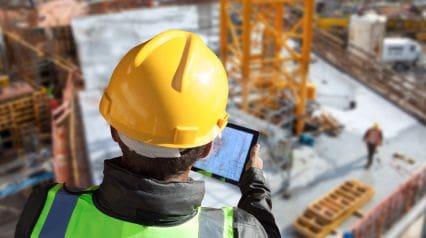What is Construction Risk Management?
Construction risk management is the systematic process of identifying, assessing, and mitigating potential risks that could impact a construction project’s successful completion within the allocated budget and timeline. It involves proactive measures to minimize the negative effects of uncertainties and encompasses various strategies, tools, and practices to address a wide range of risks associated with construction projects.
Importance of Risk Management in Construction Projects
Risk management plays a pivotal role in ensuring the successful execution of construction projects. Its importance cannot be overstated, as effective risk management contributes to project predictability, cost control, safety, and overall project success. Here are some key reasons why risk management is crucial in construction projects:
- Minimized Cost Overruns – helps identify potential cost risks early, allowing for proactive planning and allocation of contingencies to cover unforeseen expenses
- Timely Project Completion – maintains project schedules to meet contractual obligations and ensure project stakeholders’ satisfaction
- Enhanced Safety – creates a safer work environment for all involved parties by mitigating risks and developing safety plans
- Optimized Resource Allocation – minimizes resource shortages and wastage, improving project efficiency
- Improved Decision-Making – provides project managers with valuable insights into potential challenges and their consequences based on risk assessments
- Early Problem Detection – prevents small problems from snowballing into major obstacles
- Effective Change Control – helps anticipate changes and their impact, allowing for smoother integration of modifications
- Enhanced Profitability – helps protect profit margins by reducing the likelihood of costly rework, delays, and additional expenses
- Stakeholder Confidence – fosters trust and may attract further investment or collaboration
- Project Resilience – ensures that projects can navigate unforeseen circumstances with minimal disruption
Types and Examples of Construction Risks
To be able to create a targeted construction risk management plan for your projects, it’s important to understand the various classifications and specific examples of the risks you might encounter, including the following:
Financial
This type of risk refers to uncertainties that could impact the project budget and funding. Here are some examples:
- Cost Overruns – Unforeseen ground conditions increase excavation costs, exceeding the budget.
- Budget Constraints – Insufficient funds allocated for contingencies lead to compromises on project quality.
- Payment Issues – Delays in client payments disrupt cash flow, affecting subcontractor payments and project progress.
Schedule
This pertains to risks that may lead to delays in project completion. Some real-life instances include the following:
- Weather Delays – Unpredictable weather conditions halt construction activities, extending the project timeline.
- Material Shortages – Delays in receiving critical construction materials postpone work progress.
Design and Engineering
Risks associated with project design, documentation, and technical aspects that could lead to errors or inefficiencies can also be present. Here are a few examples:
- Design Errors – Incorrect structural calculations require costly design revisions during construction.
- Inadequate Planning – Insufficient analysis of site conditions leads to unforeseen challenges that disrupt construction progress.
Safety and Health
Workers and stakeholders may also be exposed to hazards, leading to accidents, injuries, or long-term health issues. Some practical scenarios are the following:
- Workplace Accidents – Inadequate safety measures can result in a worker falling from a height and sustaining injuries.
- Health Hazards – Exposure to hazardous materials, like asbestos, can cause respiratory issues for construction workers.
Contractual and Legal
Contractual and legal risks are uncertainties arising from contractual obligations, disputes, or regulatory non-compliance. Here are a few instances where these can be present:
- Contract Disputes – Disagreements between the contractor and client over change orders and payment terms may impact the timeline and resource allocation of the project.
- Regulatory Compliance – Failure to meet zoning requirements results in project delays due to permit rejections.
What are the Steps of Risk Management in Construction?
To enhance the likelihood of project success, having a structured approach to construction risk management is important. Follow this step-by-step guide on anticipating, addressing, and mitigating potential challenges involved in your construction project:

Construction Risk Management Process
- Identify – In this step, potential risks are identified by analyzing project documents, conducting site visits, and consulting with stakeholders. This also involves recognizing both internal and external factors that could impact the project’s success.
- Assess – Risks are then assessed for their likelihood of occurrence and potential impact using qualitative and quantitative methods to prioritize risks. In this step, using a construction risk assessment checklist is recommended.
- Prepare – After assessing risks, strategies are developed to mitigate, avoid, transfer, or accept them. Contingency plans must also be created to outline specific actions to be taken.
- Recover – The recovery phase is then initiated when a risk materializes. This involves implementing predefined contingency plans to address the risk’s effects and minimize its impact on the project.
- Review – Once the project is completed, a review of the risk management process is conducted. This includes assessing the effectiveness of risk mitigation strategies, identifying lessons learned, and incorporating improvements into future projects.
Create Your Construction Risk Assessment Checklist
Eliminate manual tasks and streamline your operations.
Get started for FREECommon Challenges in Construction Risk Management
Navigating construction risk management can be a complex endeavor, and several common challenges can arise along the way. Overcoming these is crucial to ensuring successful project outcomes.
Here are some of the common challenges that construction teams can encounter:
- Lack of Risk Mitigation Strategies
- Communication Breakdown
- Resistance to Change
- Changing Project Dynamics
- Balancing Costs and Benefits
- Neglecting Post-Project Review
- External Factors (e.g., natural disasters, wide-scale emergencies)
One of the best ways to address these is to provide targeted and comprehensive training to construction teams using innovative solutions like SafetyCulture (formerly iAuditor)’s Training feature.
Training helps organizations create, deploy, and monitor training programs to ensure everyone is aligned with project standards and expectations. By conducting construction risk management training, teams can be equipped with the skills, knowledge, and tools needed to adapt to changing project dynamics and embrace modern risk management approaches.
By investing in training, construction organizations can also ensure that their teams are prepared to navigate the complexities of construction risk management, leading to more resilient projects and improved overall success rates.




